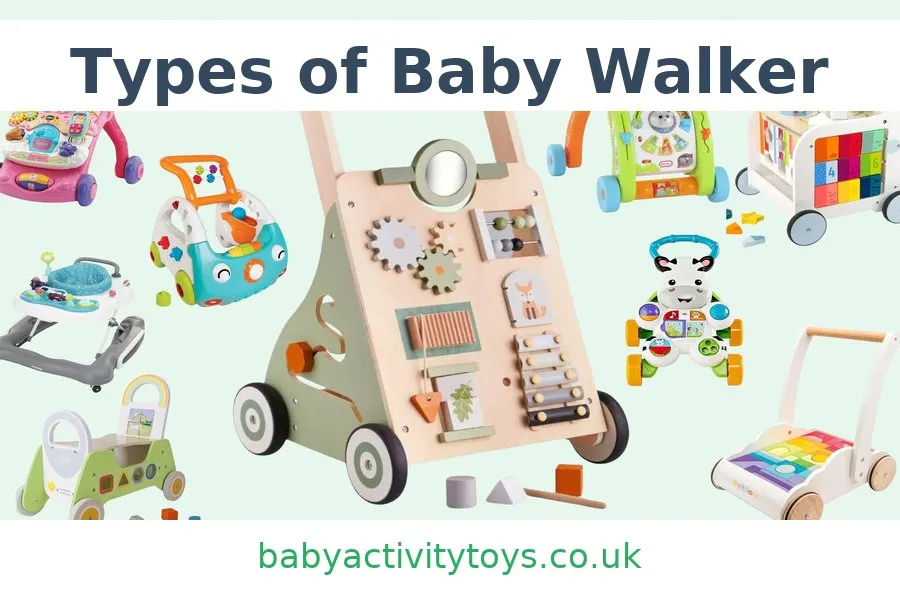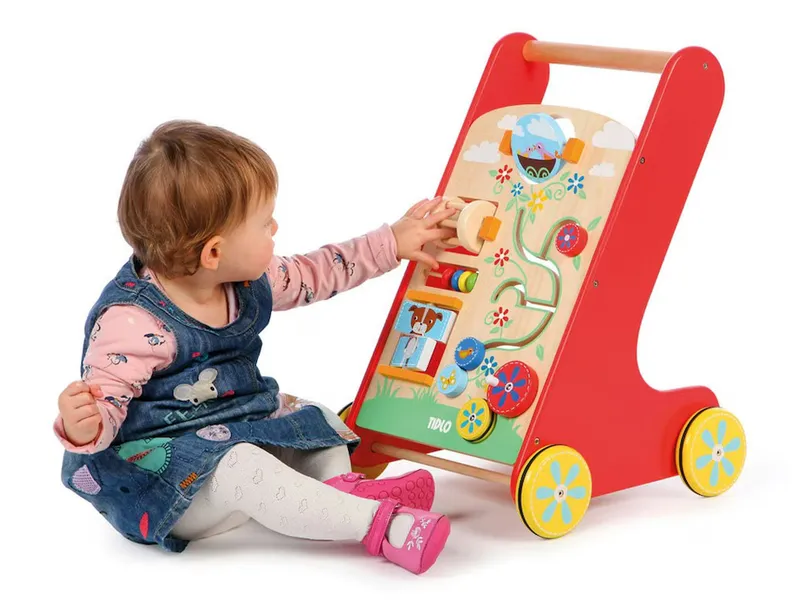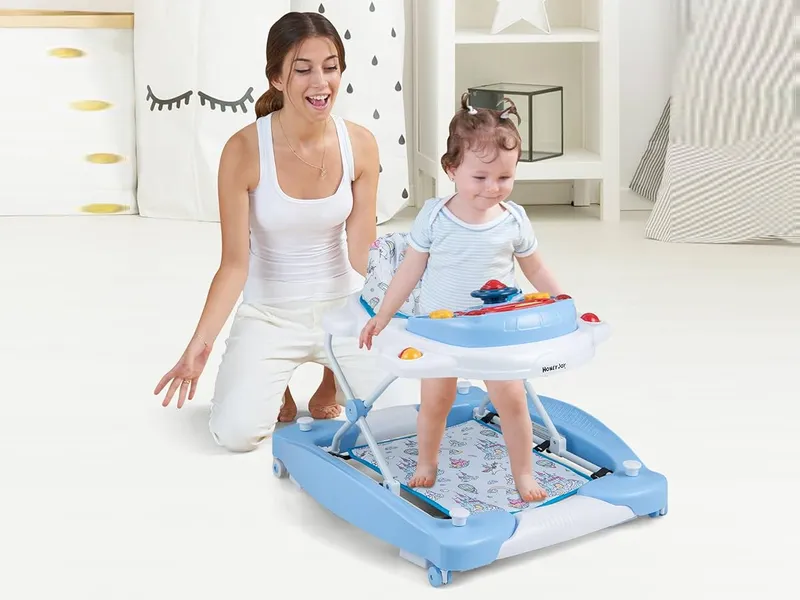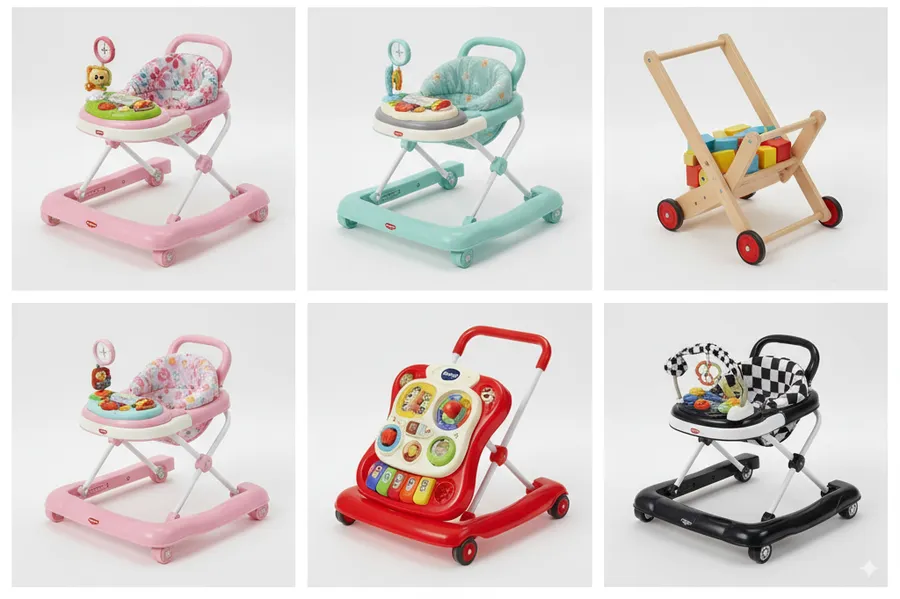
Types of Baby Walkers
As your little one embarks on their exciting journey of mobility, you might find yourself wondering which baby walker is the right fit for them. With a myriad of options available, choosing the perfect one can be quite a task. Fear not!
In this comprehensive guide, we’ll walk you through the various types of baby walkers, shedding light on their features, benefits, and considerations. From traditional walkers to sit-to-stand ones, we’ve got you covered. So, let’s dive in and explore the world of baby walkers together!
1. Traditional Baby Walkers:
The tried-and-true traditional baby walker remains a popular choice for many parents. These classic walkers typically have a frame with wheels and a comfortable seat where your little one can sit while propelling themselves forward with their feet. They offer excellent support and stability, making them an ideal choice for babies who are just beginning to explore the world on their own two feet.
Example: Picture your little explorer comfortably seated in the walker, joyfully pushing off the ground with their feet to glide around the house.

2. Sit-to-Stand Baby Walkers:
Sit-to-stand baby walkers are perfect for babies who are transitioning from sitting to standing independently. These walkers often feature interactive panels with buttons, lights, and sound effects, encouraging your child to pull themselves up and engage with the activities. As they become more confident in standing, they can use the walker to take those exciting first steps.
Example: Watch with delight as your little one uses the sit-to-stand walker’s interactive panel, giggling with every sound and honing their standing skills.

3. Push Walkers:
Push walkers are designed to support babies who are already standing and taking steps with assistance. These walkers typically have a handle or bar at the back for your child to hold on to while they push the walker ahead of them. Push walkers offer more freedom and encourage your little one to explore independently while building strength and confidence.
Example: See your child proudly pushing their walker across the room, beaming with pride as they take those wobbly yet determined steps.

4. Activity Centre Walkers:
Activity centre walkers combine the benefits of a traditional walker with engaging activity centres. These walkers feature a play tray or dashboard with toys, mirrors, and interactive elements to stimulate your child’s senses and creativity. They provide a fun and enriching playtime experience, even when your little one is not on the move.
Example: Imagine your child gleefully playing with the activity centre’s buttons and mirrors, captivated by the array of colours and sounds at their fingertips.

5. 2-in-1 Convertible Walkers:
Convertible walkers are the epitome of versatility, designed to adapt as your child grows. These innovative walkers can transform from a seated walker for younger babies to a push walker for toddlers ready to take bigger strides. This all-in-one solution ensures long-lasting usability for your child’s ever-changing needs.
Example: Experience the convenience of having a single walker that seamlessly transitions from a supportive seat to a reliable push-along companion for your child’s every milestone.
Tips for Choosing the Right Baby Walker:
When selecting a baby walker, keep the following tips in mind:
- Safety First: Opt for walkers with safety features like wheel locks, sturdy frames, and a wide base for stability.
- Adjustability: Look for walkers with adjustable seat heights to accommodate your growing child.
- Interactive Elements: Choose walkers with engaging toys and activities to keep your little one entertained and stimulated.
- Easy Maneuverability: Ensure the walker moves smoothly on different surfaces and is easy for your child to navigate.
Conclusion:
Now that you’re familiar with the various types of baby walkers, you can make an informed decision based on your child’s needs and developmental stage. Whether you opt for a traditional walker, a sit-to-stand one, or an activity centre walker, each type offers its own unique benefits. Remember to prioritize safety, consider your child’s preferences, and enjoy witnessing their growth and exploration with the perfect baby walker by their side.
Next up: Choosing the Right Baby Walkers
In our next blog post, we’ll guide you through the process of selecting the ideal baby walker for your little one. We’ll discuss important factors such as safety considerations, quality, and additional features to help you make a confident choice. Get ready to find the perfect companion for your child’s exciting journey towards independent mobility!





